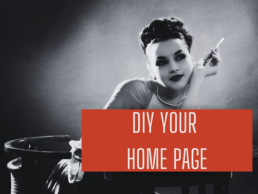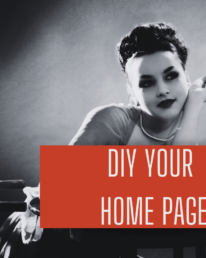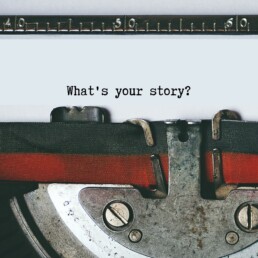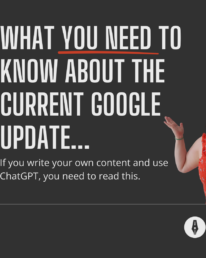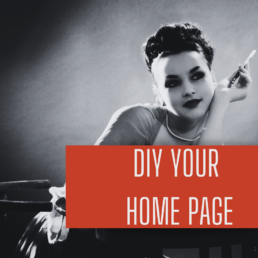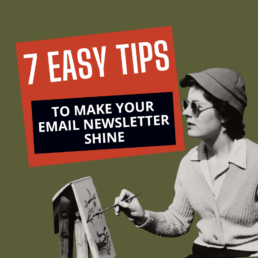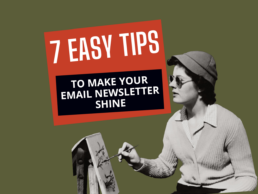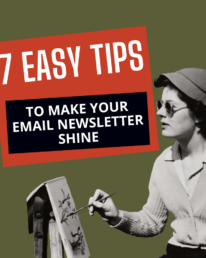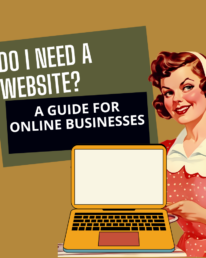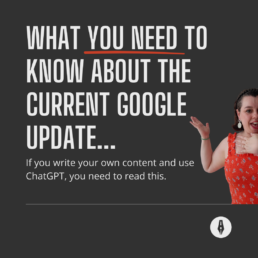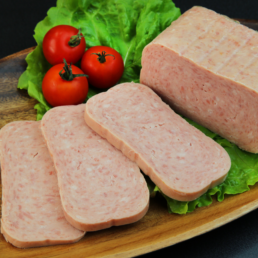How to DIY your website: The HOME PAGE edition
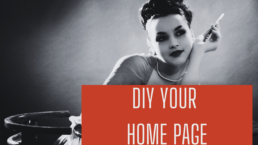
Newsletter
Ever since I became a copywriter, I’ve pictured standing in the middle of Grand Central Station whenever I write a home page.
Lots of pale, sand coloured marble. Avenues that take you to different trains. Huge arches you can’t help but stare at. Bustling with a range of people, from the dangerously tired to the eager tourist. Signs and stalls and stairways that promise more. Wanderers, travellers and explorers alike, all looking for that next step in their journey.
Full transparency!
I’ve written about this before.
BUT, it’s important, so I’ve written about it again!
And this time, I’ve tried to break it down more.
HOW TO DIY YOUR HOME PAGE
PART ONE: The train station
In my opinion, the home page is the hardest page to write on your website.
Why?
Because it’s got to appeal to more than one ideal client and that is usually a recipe for confusion. (Appeal to everyone and you appeal to no one).
But I like to think of the home page as the train station of a website.
Imagine Grand Central Station in New York.
Busy, bustling.
People looking for signposts on where to go.
Some people know what they’re looking for. They just need to find the right platform. A site search function is great for this (particularly on ecommerce sites).
Some people are just having a nosy around. (Clear signage to different sections, departments, offers or products let’s them know what’s available).
Some people know they want to travel but don’t know where to. They have questions. (Direct them to a blog, guides, video walkthroughs or FAQs).
The homepage needs to welcome people in, make them feel safe and direct them to another part of the website that will get them closer to what they need.
So the trick is to do that without being chaotic or confusing. Because your potential customers will just leave.
There must be something about the page too, that let’s people know where they are, even if they don’t yet know exactly what they want.
Like Grand Central, you know it’s major train station the second you see it.
If someone lands on your homepage and they can’t tell what it is you do, offer or sell within seconds, you’ll probably lose them.
PART TWO: Some pre-requisites
So how do you even begin to write your homepage?
Well, you’ve got to know the following about your business FIRST.
(And this might seem obvious but you’d be surprised at how many businesses don’t have this info – especially when they’re just starting out.)
- Any feedback, reviews or testimonials from clients, customers and people you’ve worked with.
- Your products, services or exactly what it is you offer. I find it useful to make yourself some bullet points covering WHAT you offer, HOW you offer it, WHO you offer it to and WHY you offer it.
- If you’re refreshing your website and already have a blog or social media, make a note of your most popular content as it may be useful to include.
- Any free resources or people pullers (lead magnets) that you have. Maybe it’s an on-demand webinar, a how-to guide or a quiz.
Just gather this information together and have it on hand.
PART THREE: How to ask for testimonials or reviews
Testimonials or reviews are GOLD for your business. And an essential part of your marketing and messaging. But when you’re just starting out, you might not have any!
And how do you start to collect them? Cos that can feel a bit awkward.
The best way to get this info is to just ask.
And there are a few ways you can do this.
- Create an email or a short questionnaire that you send to every client after you’ve finished working with them. You can make it easier by giving them options, for example, out of 10, how would you rate my service? And then you can ask them to expand their views in their own words. You can also be direct with the question(s) you ask. So rather than just saying, can you give me a testimonial you could ask them how they found certain aspects of working with you, such as your process, your communication, what results they got and any stand out moments for them.
- DM people you’ve worked with in the past and ask if they’d be happy to share a few words. If you’re just starting out, this is ideal because you can ask them to focus on what it was like to work with you as a person, and it doesn’t have to be in the job or role that you have now.
- Interview a client or customer. If you want to get a lot more info and deep into the nitty gritty, conduct an interview. You can offer a small incentive like a gift voucher for their time, and have a chat in person or over zoom. Use a set of questions to help structure the call, but let the conversation flow as well. You might find that the interviewee has lots to say about a particular part of your work, so let them tell you everything.
There are some apps/software that you can use to automate asking for testimonials or reviews and adding them to your website. Check out Senja – they have a free version.
PART FOUR! What’s your destination?
Every single thing you write for your business, should have a goal. Whether it’s an email, a social media post or a web page.
Most of that time, that goal should be singular. And that’s because people get analysis paralysis if you give them too many options. They just don’t know what to pick and you might inadvertently send them elsewhere.
Once you get the hang of this, it makes everything much easier to write.
BUT
A home page is different. Let’s go back to the train station analogy.
Your home page might have a few different goals because it acts as this central point from which people can find their way.
So first up, define what the goal is.
Do that by clarifying what you want people to feel, what sticking points they may have (so you know what objections you need to overcome for them) and what you actually want them to do.
Let’s look at how I did this for my website:
I want people to send me an enquiry. And to do that, they need to visit my services or about page because I want them to feel intrigued, excited and safe to find out more about me and what I offer. They’re probably worried about wasting time and money on something that they’re not sure will be valuable. And so I need to convince them that hiring a copywriter is a hugely worthwhile investment. They’re probably also worried about working with someone who may not know or understand them and their business fully. So again, I need to convince them that I am a chameleon. That I do get them. That I will get as excited about their business as they are about it.
Now you try!
PART FIVE: Pulling it all together
Now you should have a bunch of info at this point, ready to use it to craft something that really speaks to the heart of your ideal client.
It’d be really handy if I gave you a template here wouldn’t it?
Ughh. I’m so sorry, but there’s more than one type of home page, so giving you a template could send you off in the wrong direction.
Think instead, about what you want to achieve.
If you want people to book a call or click buy, then you’ll need more of a sales approach.
If you want someone to check out your services, you’ll need to direct them to that page.
If you want to build trust and you have an abundance of testimonials and case studies, you might want to make these the focus.
Things you’ll definitely need to include are:
-
A headline – grab your audience with a statement that tells people exactly what you do and how you do it. What makes you different to everyone else?
-
A mini bio. Not like the life story you might include elsewhere, but a shorter, relatable intro to you. Think of it as your personal elevator pitch.
-
Clear signposting. Pick no more than three possible actions for their next step. Tell them why they each step is important, necessary even. They’ve got to want to take that next step.
You might also want to include a freebie of some kind. But make sure its juicy. A compelling download or free resource that will be genuinely helpful to them.
PART SIX! Get scribbling
This is it. You’ve made it to the writing stage.
It’s time to get out your pen and paper and start scribbling.
DO NOT TRY TO EDIT AT THIS STAGE.
If you find yourself trying to find “the perfect words” at this point. Stop. They don’t exist. YET.
Just start writing. Pull things from your research and all the previous steps.
Don’t think about how you can make something sound better. Just write.
Don’t cross anything out. Just write.
Don’t try to make something more snappy. Just write.
Don’t go back and re-read before you’ve finished. Just write.
This is really important, because the editor and the writer are two different people. Two different skillsets. Two different parts of the brain.
Trying to do both at the same time is what trips so many people up and makes the blank page, stay blank.
If you’re still struggling, use my homepage template to get your started.
PART SEVEN: Understanding the outcome
If you’re struggling to understand how to piece everything together, it’s time to do a bit of research.
Find some websites in your industry / niche.
Go to their home page and ask yourself:
- Can you understand what they do, who they do it for and what’s different about them or their offering? Is this info available above the fold (that means without scrolling down the page.)
- Are you able to see the person or people behind the business? A snippet somewhere that gives an insight into the human behind it all? Does it make you want to find out more?
- Is it clear what you should do next? Do you have too many choices? Is the way forward easy to navigate?
Jot down some notes of what works and what doesn’t work and bring that knowledge back to your own home page.
Add in anything new you’ve thought of.
PART EIGHT: Editing
Now you have a first draft of your home page, it’s editing time.
Go put on a different hat. (Literally if you need to!)
The editing stage is about refining. Making sure your words are hitting the spot. That they don’t sound like an unruly mouthful.
Editing doesn’t mean cutting loads of words out, although this can be part of it. It means making your message crystal clear.
Because confusion is a killer.
PART NINE: Go live
The time has come.
You must now set your words free. Publish them live on your website.
There are ways you can test how well your home page is working.
- Metrics – are people actually doing the thing you wanted them to do?
- Screen tests – there are online tests you can do where you can show people your website for a few seconds and then get them to give feedback. It’s a good way of showing if your message is clear and easy to understand. Take a look at Lyssna for the kind of tests you can run (it is a paid service).
- Ask people. Ask you friends, clients, customers and fellow business owners.
- A/B testing. If you came up with a couple of headlines but weren’t sure which one was the best, you can A/B test. This means half your audience will get shown one version, and the other half another version and you can see which one performs better.
You’ve got to give it time though. You can’t get a true gauge on how well something is working in just a day.
I like to give something at least 6 weeks – 3 months to account for any seasonality that might affect if, how and when people are coming to your site.
Ready to give it all a go?
If you’re ready to DIY your home page then download the home page template and work through each part carefully.
Don’t rush it. Trust the process.
And if you don’t have the time or brain space for this, and you need to hire a copywriter to do it for you, send me a message and let’s get the ball rolling.
December 29, 2024
What is the S.A.F.E Method?©
June 28, 2024
How to write a homepage
December 29, 2024
How to DIY your website: The HOME PAGE edition
April 18, 2024
Is your AI content safe to use?
August 9, 2024
What is conversion copy?
May 4, 2023
All About Copywriting
What is the S.A.F.E Method?©

Newsletter
In 2023, I quit my 9-5 and started my own business as a freelance content and copywriter. Within the first few weeks I was fully booked for the next year. But even though I’d worked as a writer, communicator and digital marketer for over 20 years, marketing my own business felt like a brand new learning curve. And it was big!
As anyone who is self-employed will tell you, there’s an endless list of things to do. And social media with its many different platforms, along with all the other aspects of marketing, can quickly become overwhelming. It’s full of distractions, and can be really damaging to your mental health.
I was also looking to leave behind all the common traits of a 9-5 job that had, over the years, made me feel trapped and ill. You can read more about my full burnout origin story in my newsletter. It’s free to subscribe and there’s an archive of helpful articles around running a business, and writing copy.
So to cut through all the noise, I simplified.
What does S.A.F.E stand for?
S.A.F.E stands for:
Sustainable – because otherwise, what’s the point?
Authentic – the best way to build genuine connections with your audience.
Fun! – the more fun you can have in your business, the better. It helps with the S and the A.
Emotive – there’s a saying that we buy on emotion and justify it with logic, (and it’s backed up by neuroscience), but it’s a little more complicated than that. And if you want a sustainable, long-term business, then you don’t just want people to buy from you. You want them to become loyal customers, advocates for your offering. You want them to recommend you to others and come back to you again and again.
Why the S.A.F.E Method?
With these four pillars, your marketing also becomes literally more safe. Too many of us are burning out. Doing more work for less pay. Being bombarded with information from everywhere, morning, noon and night, at a rate never seen before.
Our ways of working that we’re all used to, are not conducive to health. And I believe that’s part of the reason so many of us suffer with anxiety, depression and low mood. We’re in environments daily where we’re forced to compete and compare ourselves against our colleagues and peers. Our brains don’t know the difference between a physical threat and a psychological one. It has the same effect on the body.
So I came up with this methodology to keep myself and my clients safe.
How does the S.A.F.E Method help you?
I want you to feel empowered by working with me. My DFY (do-for-you) services take all the stress away from creating content and posting it online. Because I do it for you!
There are going to be times though when you need to create and post your own content. Especially on social media. So this method protects you when you go out on your own.
With the S.A.F.E method you’ll feel empowered, liberated and supported.
Want to chat more about it?
March 22, 2024
WHAT YOU NEED TO KNOW ABOUT THE LATEST GOOGLE UPDATE
April 16, 2024
10 Reasons you should be blogging for your business
December 29, 2024
How to DIY your website: The HOME PAGE edition
May 4, 2023
All About Copywriting
December 29, 2024
How to DIY your website: The HOME PAGE edition
7 Easy tips to make your email newsletter shine
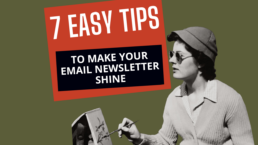
Newsletter
Are you a startup, savvy small business owner or artsy entrepreneur? 👋 Ready to start communicating with your audience through email? Don’t know where to begin?
Then let’s chat about creating a regular email newsletter. One that’ll have your audience looking forward to it hitting their inbox because they can’t wait to hear what you have to say.
What is an email newsletter?
Before we begin, let’s just clarify what an email newsletter is. And what it’s not.
An email newsletter is a regularly sent email communication that informs your audience about your business, your products or services and any related news and tips.
An email newsletter is NOT a promotional or sales email, even though there may be aspects of selling in some of your newsletters. Selling will not be the primary goal. If it is, then that’s actually a marketing email.
How is a marketing email different from a newsletter?
Email marketing allows you to target specific users or potential customers through segmentation and with personalised messaging. Marketing doesn’t just involve sales however. It can also include retention, launch sequences, welcome sequences, engagement and driving a specific action.
Newsletters on the other hand cover wider themes and look to educate and inform a wider audience, giving value and creating a stronger connection between your brand and your reader’s everyday life.
The two are interlinked though and provide support to one another. You’re less likely to trust a company that spams you with only sales emails every week. And you may not stay subscribed to a newsletter that never produces any offers or promotions. So the two are very much complementary.
Are email newsletters still relevant in 2024?
Absolutely! In fact the average ROI (return on investment) of email is 36:1, as of 2022. That means £36 for every £1 spent.
And although this is more likely to be in relation to specific marketing emails, your newsletters are really important in building long-term trust. They’re brand building without the higher costs that can be associated with other forms of paid advertising.
What program do I use to make an email newsletter?
There are lots of options for email platforms. It just depends on what features you need and what your budget is.
This email newsletter is coming to you through Substack – completely free. But it has limited features and design elements.
Other well-known and highly recommended platforms include Mailchimp, mailerlite and Flodesk. There are different tiers available for each of these and pricing and features vary, but they tend to have more design features and the ability to segment and personalise easily.
7 Simple steps for optimising your email newsletter
But now let’s get to those top tips. If you’re just starting out and sending your first email, or if you’ve been doing it a while but aren’t sure if your newsletters are hitting the mark, these tips will help optimise in 7 simple steps.
1. First things first: What's the point?
Ahhh, the million-dollar question. Before you start typing away, or having an existential crisis ask yourself:
- Why am I sending this email? (And no, “because I have to” doesn’t count!)
- What’s in it for my awesome readers?
- What do I want them to do after reading? (Spoiler: It’s not always “buy stuff”)
If you’re scratching your head, your email might end up being as exciting as watching paint dry. And trust me, nobody wants that!
2. Let’s get bizzy and set those goals!
You’re not here to be a pushy salesperson (ew), but you do need a game plan. Maybe you want your readers to:
- Check out your snazzy new website
- Read your latest mind-blowing blog post
- Watch that video where you finally nailed your dance routine (I mean, tutorial)
Whatever it is, make it crystal clear. Your readers aren’t psychic.
3. Subject line sorcery
Speaking of spooky, it’s time to channel your copy charm! Your subject line is like the cover of a book – it’s gotta be good, or no one’s opening that baby. Here’s what to do:
- Snoop through your own inbox. What makes you click? What makes you cringe? Take not of both. Make your own swipe file for future reference.
- Keep it short and sweet. No one likes a rambler. And a long subject line will get cut off by most email providers.
- Get creative! Funny, mysterious, personalise it – mix it up!
- Emojis can be fun, but use ’em wisely. No one wants to see 🎉🎊🥳 every time.
And don’t forget that preview text. It’s like a movie trailer for your email!
4. Structure it like a boss
Most people skim read online. So make it easy for them to pick up the jist and focus on the areas they’re interested in:
- Use headers to tell readers what each section is about
- Bullet points are your BFFs – if you’ve got a list to share
- Keep paragraphs and sentences on the shorter side. It’s easier to read and digest information. Especially if someone is reading on a mobile. A few sentences looks like a pretty chunky bit of text on a phone screen.
- Throw in some pics to break up the text (bonus points if they’re of cute animals or funny gifs)
Pro tip: Add a little intro and outro. Something like, “Hey there! I’m Jane, and I paint dreams on canvas. New here? Scroll down for a special ‘welcome to the madness’ discount!”
Your outro can include a link to your website and ways to work with you.
5. Links and CTAs: The dynamic duo
Links and Calls To Action (CTA’s) are going to take people away from reading your email, so be aware:
- Don’t go link crazy. Choice paralysis is real.
- Make sure links open in new tabs. Don’t kick people completely out of your email.
- Buttons are the bee’s knees for important stuff.
- Get personal with your CTAs. Instead of “Download the free guide,” try “Gimme that free goodness!”
- Or better yet, go for value: “Yes, I want to paint like a pro!”
6. Themes: Your content compass
Coming up with content ideas shouldn’t feel like pulling teeth. Pick 4-5 themes and stick to them:
- Your weekly adventures
- Tips for fellow professionals in your field or a lifestyle topic that your readers will relate to
- Behind-the-scenes peeks
- Industry hot takes
Mix and match. Your readers will know what to expect, and you won’t be staring at a blank page wondering what the flip to write about each time.
7. Polish that gem
Before you hit send:
- Get a second pair of eyes on it. Every great writer had an editor!
- Read it out loud. If you sound like a robot, rewrite it.
- A/B test. Most email providers have that feature available.
- Avoid sketchy “hacks” that will land you in spam jail.
- Run it through a spam checker. Better safe than sorry!
Bonus round!
Remember, writing the perfect newsletter is like perfecting your signature dish. The same formula doesn’t work for everyone. It takes time, practice, and a willingness to try different things.
If you see everything as an experiment, then you can’t fail. You only win or learn.
Now, off you go! Time to create an email newsletter that’ll make your audience hit reply just to say “Wow!” And if you need a hand with that writing magic, you know where to find me. ✨
March 22, 2024
WHAT YOU NEED TO KNOW ABOUT THE LATEST GOOGLE UPDATE
September 6, 2024
Do I need a website? A guide for online businesses in 2025
April 16, 2024
10 Reasons you should be blogging for your business
March 22, 2024
WHAT YOU NEED TO KNOW ABOUT THE LATEST GOOGLE UPDATE
September 4, 2024
